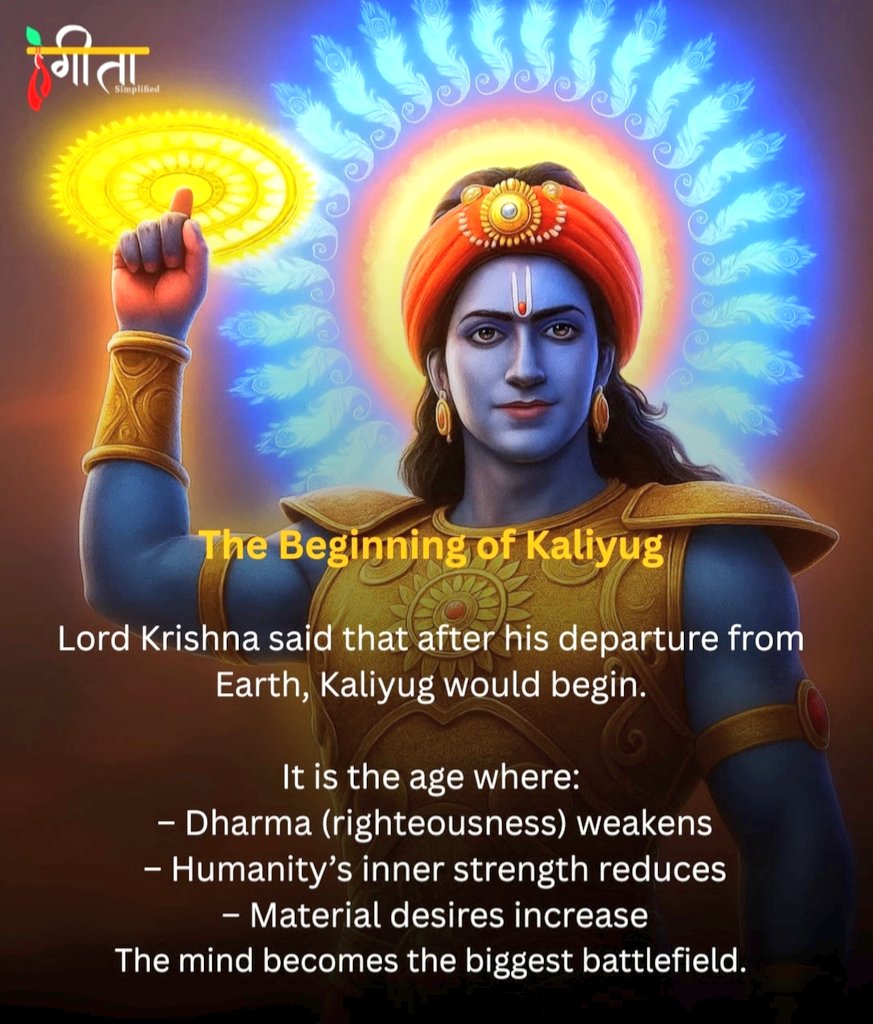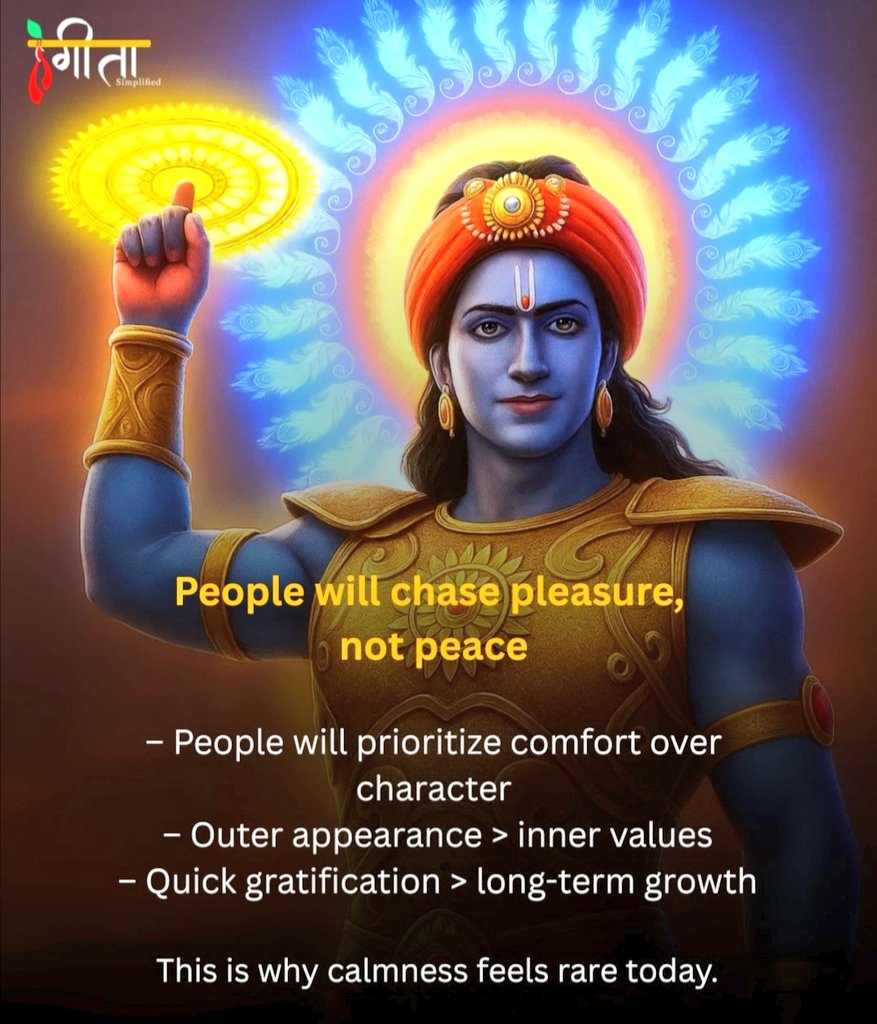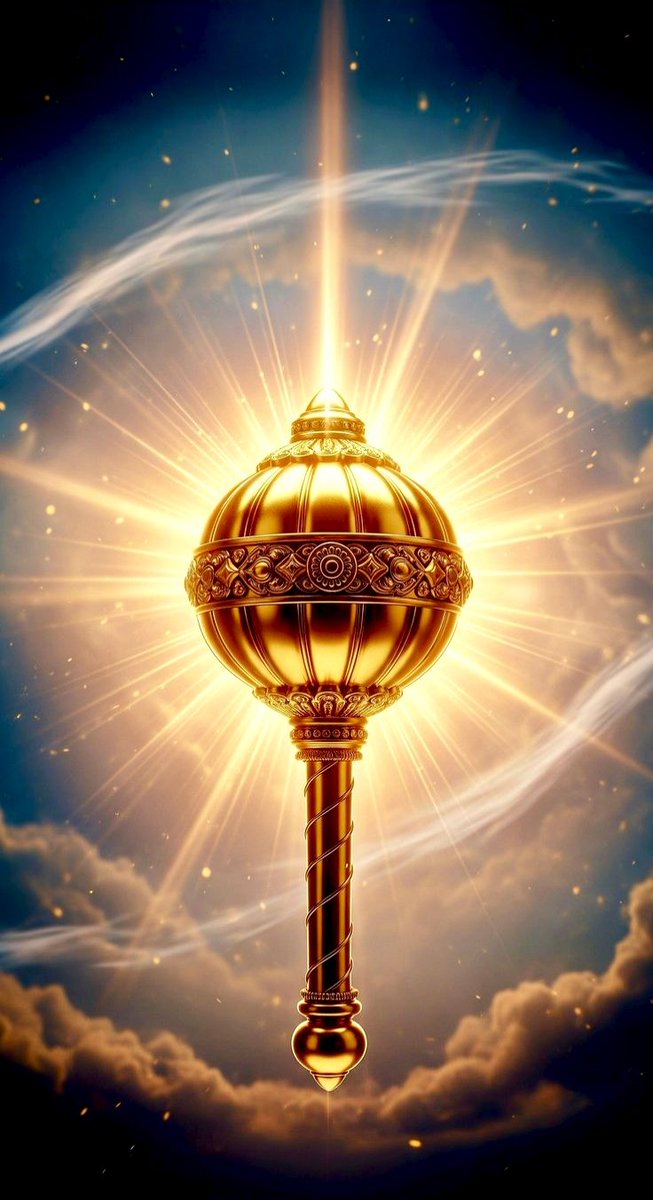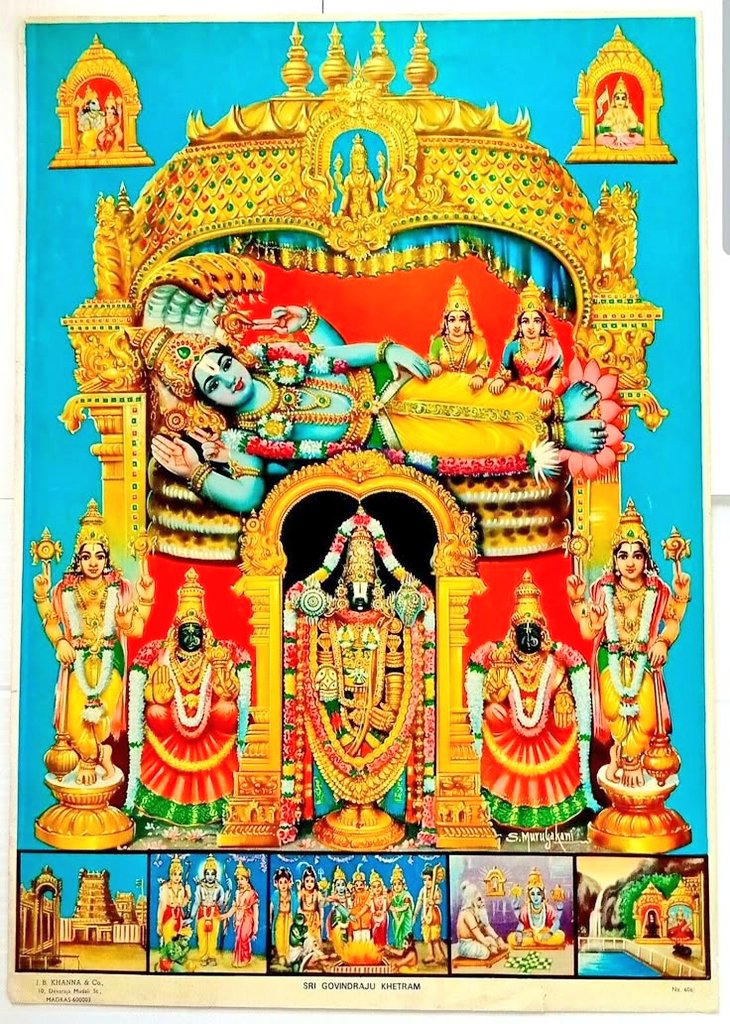Do you know?
Bajiprabhu Deshpande was a great Maratha warrior who lead an Army of just 300 maratha warriors against an army of 10,000 plus Adil Shahi forces in the narrow Ghod Kind pass which was later renamed as Paavan Kind by Shivaji Maharaj.
This is his story.
Bajiprabhu Deshpande was a great Maratha warrior who lead an Army of just 300 maratha warriors against an army of 10,000 plus Adil Shahi forces in the narrow Ghod Kind pass which was later renamed as Paavan Kind by Shivaji Maharaj.
This is his story.

Bajiprabhu Deshpande, born in a Marathi Chandrasainya Kayastha Prabhu family on 1615 CE.The Great Chhatrapati Shivaji Maharaj was deeply impressed by him and appointed him as the military commander of south Maharashtra around the Kohlapur region. 



Maratha infantry soldiers were trained to fight with their traditional sword known as Dandpatta, also know as Gauntlet sword in English. The patta has a long straight blade ranging in length from 10 to 44 inches with the gauntlet integrated in the sword as the hand gun. 



Both Sivaji Maharaj & Bajiprabhu were master in using dandpatta.Maratha soldiers especially infantrymen used to fight with dandpatta against heavy cavalry.
After killing treacherous Afzal Khan in the battle of Pratapgarh,Marathas were able to capture Panhala fort near Kolhapur.

After killing treacherous Afzal Khan in the battle of Pratapgarh,Marathas were able to capture Panhala fort near Kolhapur.


The marathas under Netaji Palkar then attacked Bijapur but the Bijapur forces resisted the attack.Shivaji maharaj then set their base at Panhala fort.
Under Siddhi Johar,the Adilshahi forces laid siege of the Panhala fort and were able to trap Shivaji Maharaj for almost 5 months.
Under Siddhi Johar,the Adilshahi forces laid siege of the Panhala fort and were able to trap Shivaji Maharaj for almost 5 months.

However the Marathas were successful in putting a strong defensive base despites having less than 1000 soldiers.Bajiprabhu met with Shiva Nhavi who was a barber and a disciple of Shivaji Maharaj.Shiva Nhavi had a resemblance of Shivaji Maharaj and Bajiprabhu got a plan to use it. 

Bajiprabhu asked Shiva Nhavi to disguise as Shivaji and help him to escape safely towards Vishalgadh fort in Kohlapur. Shiva Nhavi agreed knowing that it will lead to his execution still the brave and proud Marathi didn’t hesitate to save his king and country. 

It was decided that Bajiprabhu and Shivaji Maharaj along with 600 strong Maratha cavalry will break the siege when Shiva Nhavi will engage them in talk. 

On the occasion of Guru Poornima( full moon night), July 13, 1660 the 600 Marathi decided to break the siege. The stormy weather made it more difficult for the Marathas.
600 soldiers led by Bajiprabhu Deshpande and Shivaji Maharaj broke the siege.
600 soldiers led by Bajiprabhu Deshpande and Shivaji Maharaj broke the siege.

Shiva Nhavi allowed himself to be captured which bought some precious time for the retreating army.
Adilshahi army captured Shiva Nhavi and realize that Shivaji had already escaped. Under Siddhi Masood, an army of 12,000 strong cavalry were sent to capture Shivaji Maharaj.
Adilshahi army captured Shiva Nhavi and realize that Shivaji had already escaped. Under Siddhi Masood, an army of 12,000 strong cavalry were sent to capture Shivaji Maharaj.

When the Maratha army reaced near the Ghodkhind Pass(Horse pass) Bajiprabhu decided to make a heroic last stand to save their King.
He let Shivaji Maharaj and another 300 soldier escape to Vishalgadh fort and offered to stay back with the remaining soldiers at the...
He let Shivaji Maharaj and another 300 soldier escape to Vishalgadh fort and offered to stay back with the remaining soldiers at the...

...Ghodkind pass to buy enough time for his King to capture the fort.
Shivaji Maharaj reluctantly agreed and decided to fire 3 cannon balls to indicate his safe arrival on vishalgadh. Bajiprabhu’s brother Phulaji also decided to stay back to fight.
Shivaji Maharaj reluctantly agreed and decided to fire 3 cannon balls to indicate his safe arrival on vishalgadh. Bajiprabhu’s brother Phulaji also decided to stay back to fight.

With Dandpatta in both hands, Bajiprabhu and his loyal 300 Marathi soldiers blocked the Ghodkind pass & collided with 12000 strong Adilshahi forces under Siddhi Johar.
The brave 300 Maratha fought for almost 15 hours.Despite being seriously wounded Bajiprabhi continued fighting.
The brave 300 Maratha fought for almost 15 hours.Despite being seriously wounded Bajiprabhi continued fighting.

Soldiers after soldiers martyred fighting the infinite looking stream of enemy soldiers.But as the battle went on,it was obvious which side was far better and polished in their skills. What could have been a few minutes of fight turned into a massacre of the forces of Adil Shah. 



Chants of “Har Har Mahadev” echoed as every maratha swords cut the muslim soldiers one after another.
The maratha warriors were like caged tigers in the narrow pass that repulsed and annihilated wave after wave of the incoming enemy muslim soldiers.

The maratha warriors were like caged tigers in the narrow pass that repulsed and annihilated wave after wave of the incoming enemy muslim soldiers.


Even after being outnumbered by almost 1:50 the battle looked like it would go on forever. Baji Prabhu was like a boulder in the way of the incoming enemies, cutting through them with his two swords. Even after being stabbed and cut multiple times,.. 

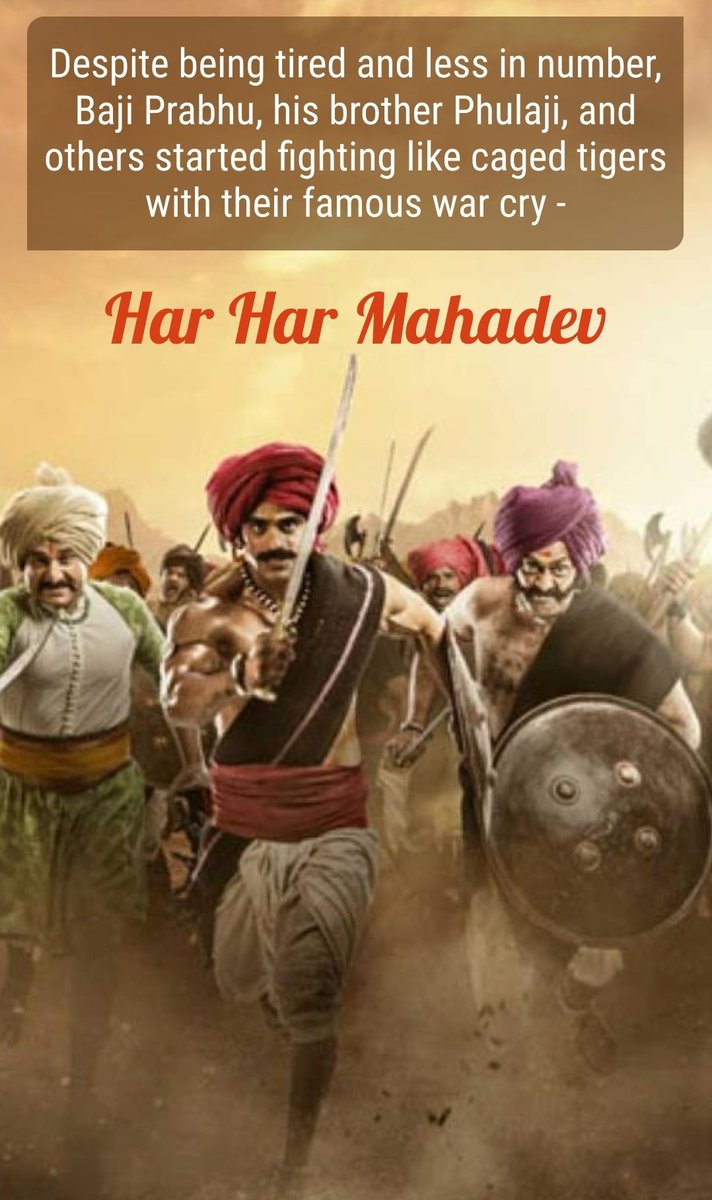

...he had decided to not stop untill he heard the 3 cannon shots that would signify the safety of his Maharaja. Many times ,it looked like he was about to give in to his injuries and pass out but with iron will summoned , he stood firm and strong and kept on fighting. 



The great Maratha Bajirprabhu Deshpande would not quit till he had heard cannon shots.Meanwhile Sivaji Maharaj was able to reach Vishalgarh fort which was already under siege of Bijapuri sardars.Shivaji&his 300 men,despite being tired defeated Bijapuri sardars &captured the fort. 



Shivaji Maharaj’s safe journey to Vishalgadh was signaled by the firing of three cannon shots. Hearing the sound of the cannon, proud and brave Bajiprabhu Deshpande attained martyrdom. To honor Bajiprabhu and other 299 Maratha soldiers who laid down their life for Swarajya,.. 



...Shivaji Maharaj named the Ghodkhind pass as Paavan Kind or Holy Pass.
Around 4000 Bijapuri forces were killed and injured. All because of just 300 maratha soldiers that fought to their deaths.
Around 4000 Bijapuri forces were killed and injured. All because of just 300 maratha soldiers that fought to their deaths.

Har Har Mahadev was their war cry which they chanted until the last breath in their body, a chant which the Veer Jawans of Indian Armed Forces still chant while serving their Motherland. 

• • •
Missing some Tweet in this thread? You can try to
force a refresh



